WE LEFT SVERDLOVSK IN 1991, A PIVOTAL YEAR. IT WAS IN THIS YEAR THAT THE SOVIET UNION COLLAPSED ONCE AND FOR ALL, AND THE CITY WAS RENAMED YEKATERINBURG. AND NOW, 28 YEARS LATER, I ONCE AGAIN FOUND MYSELF IN THE CITY OF MY CHILDHOOD.
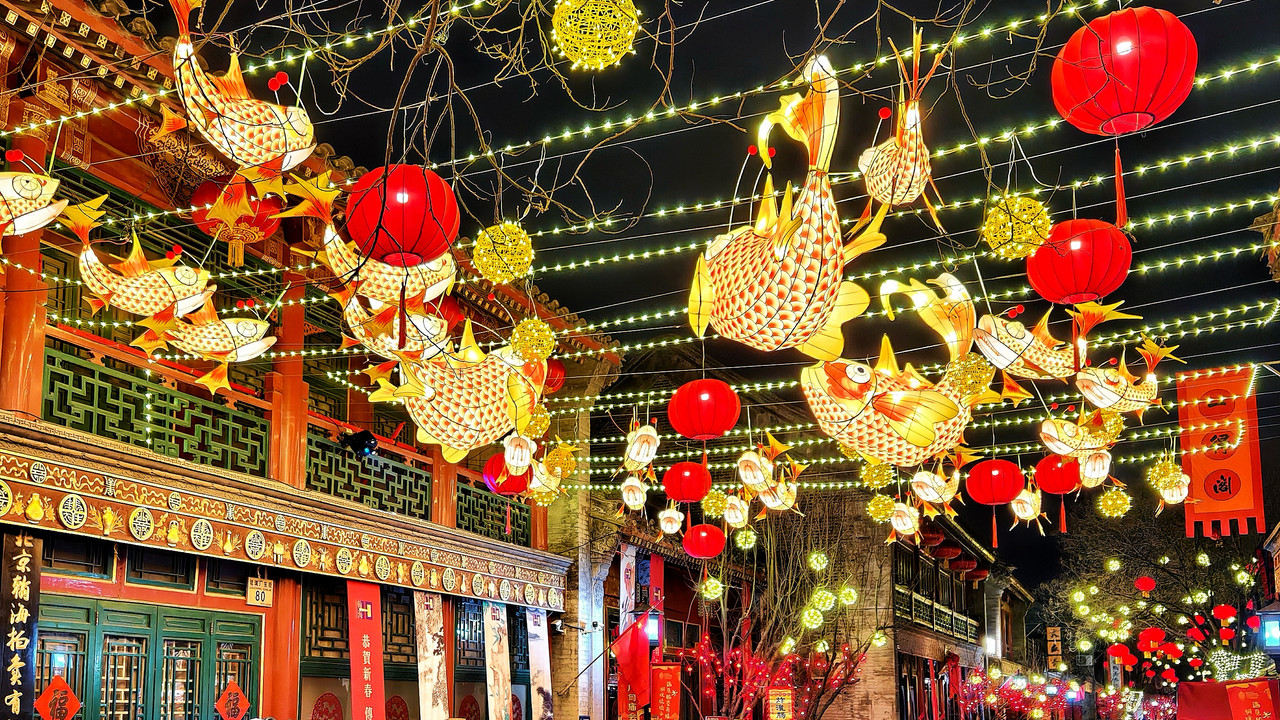
Happens in life, you experience a feeling when you return many years later to a place you once lived and with which a piece of your destiny is linked — something personal, meaningful, but already irrevocably in the past. You walk around with apprehension, wondering if your expectations and memories of those days will match up with the scene that you see today — will you be disappointed, will this reunion unravel a part of a long-past era?
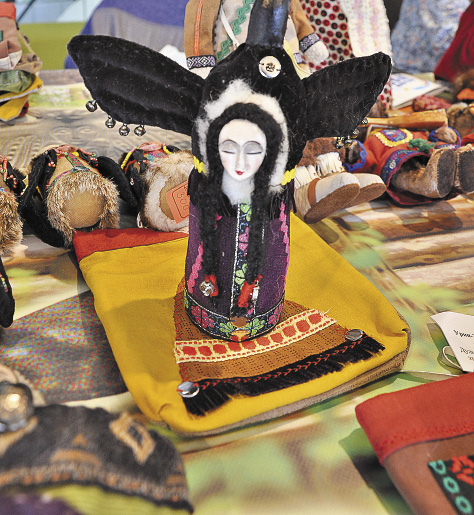
I was seven years old when we moved from Voronezh to Sverdlovsk. First year at school, first school crush, first friends, first fight… After warm, southern Voronezh, the Urals welcomed me in rather severe style: winter temperatures reached -40ºC, and everyone was walking around in felt boots and fur mittens to protect themselves from the cold. The summer, however, was hot, and outside of the city there were huge mosquitos and ticks. Only thick clothing would keep you safe.
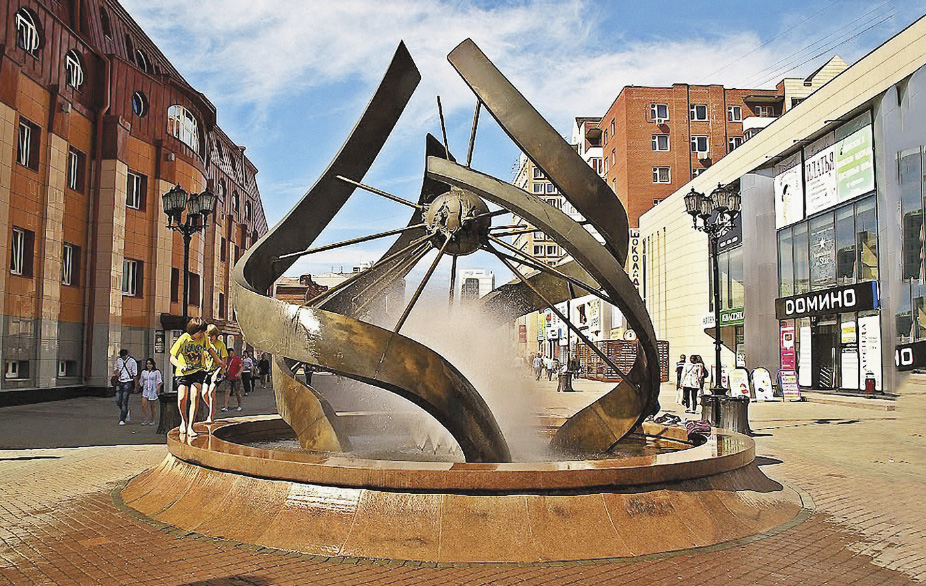
Arrival
And so, after nearly three decades, I once again found myself in the city of my childhood. Nowadays, it’s called Yekaterinburg. I arrived at Koltsovo, a modern and well-designed airport, with Ural Airlines and from there a taxi (Yandex) to the centre, which came to 500 roubles ($6.50) and took a half hour.
During the five days I spent in the capital of the Urals, I often used taxis and noticed that the cars were quite shabby and almost always dirty.
On the third day I couldn’t help (rather cautiously) asking the driver “Why don’t you clean the car?”
“I was going to today,” came the laconic reply.
The drivers I came across were all different. One was worried about a loan — he’d taken out a mortgage, wanted to pay it off early, but the bank wouldn’t recalculate the interest.
Another was a very talkative driver from Kyrgyzstan — a former Soviet republic, now an independent country. He came to the Urals in his uncle’s footsteps 10 years ago and ended up staying. He has loads of friends in Moscow, but he doesn’t want to move there, prefers things here. He got married here, and had kids. Once a year the family travels to see his relatives in Bishkek, and they visit the famous lake Issyk-Kul’. Driving 2,500 km across the hot Kazakh steppe is something he enjoys. He lives, as he mentioned, in the Sortirovka district, where the Yekaterinburg-Sortirovochny railway station is — a place that raises another vivid childhood memory.
In 1988, when we still lived here, a powerful explosion happened at that station. A railway train carrying explosive materials (47 tonnes of TNT and 40 tonnes of RDX) rolled down a slope and hit a stationary cargo train on the tracks, right next to a warehouse full of flammable lubricant oils. The explosion was so powerful that we felt it in our home 8km away from the station — the walls and floor shook as if there were an earthquake, and somewhere close by windows shattered. My parents, having seen the mushroom cloud from the window of our apartment, thought a nuclear war had started. Pieces of roofing felt, ash, and cinders fell from the sky for the whole of the next day.
Skyscrapers, Skyscrapers…
I stayed in the hi-tech Four Elements hotel in the very centre of the city, from which it was a stone’s throw to our old house. Almost immediately I found the 1905 Square (“Ploshchad’ 1905 goda”), where the city’s main events and parades happen. Lenin is still standing on the same spot, and in the building that once housed the city’s Council of People’s Deputies there is now the city administration. Next door, a huge shopping centre has appeared, called Passage, and near the house where we lived for five years another 42-storey block of apartments has been built, called “February Revolution”. A new era, but the same old names.
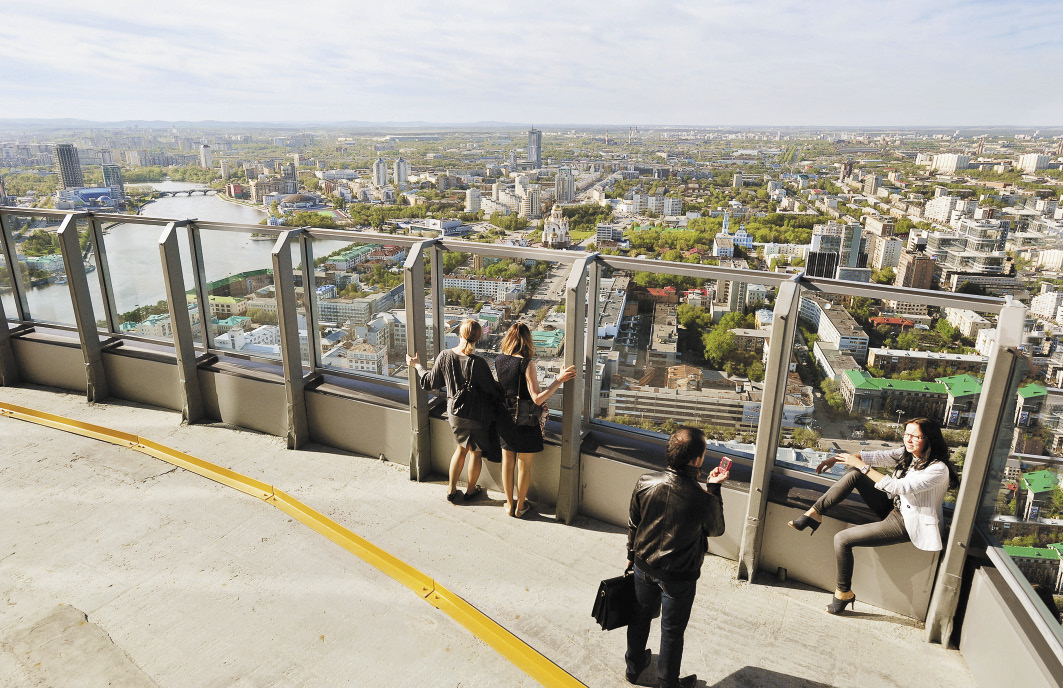
Yekaterinburg is thought to be the most compact large city (with over one million inhabitants) in Russia — perhaps that’s why in recent years so many skyscrapers have been built here.
In the very first one, a 52-storey business centre called “Vysotsky”, there is a viewing platform — a popular restaurant, Vertical, located on the second-highest floor with panoramic windows and a great view over the city. Every year athletes and amateurs take the skyscraper by storm: a competition is held to see who can reach the top floor the quickest, with more than 300 runners from various cities competing. There are record-breakers too, like Ivan Kuznetsov, a teacher from Pervouralsk, who completed the race in 4 minutes 42 seconds, taking first place. All winners receive prize money from the organisers.
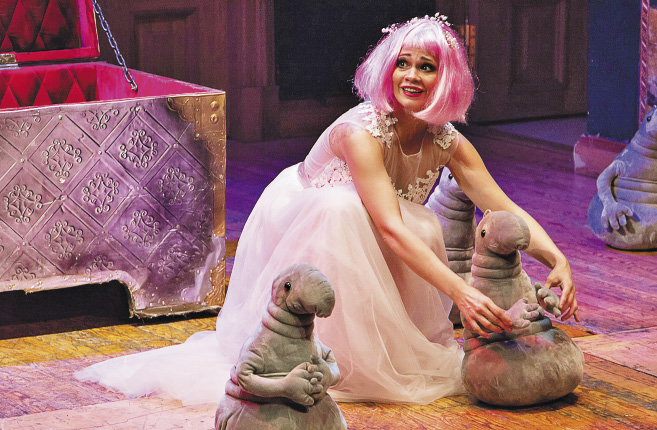
Three years ago on Boris Yeltsin Street (formerly called 9th January Street), the 209-metre-high “Iset” tower was built, containing apartments and penthouses. It was the first building in the city’s CBD, Yekaterinburg-City, funded through investment by the Ural Metallurgical Company. The stylish first-floor restaurant Korova (“Cow”) serves juicy steaks and other European dishes.
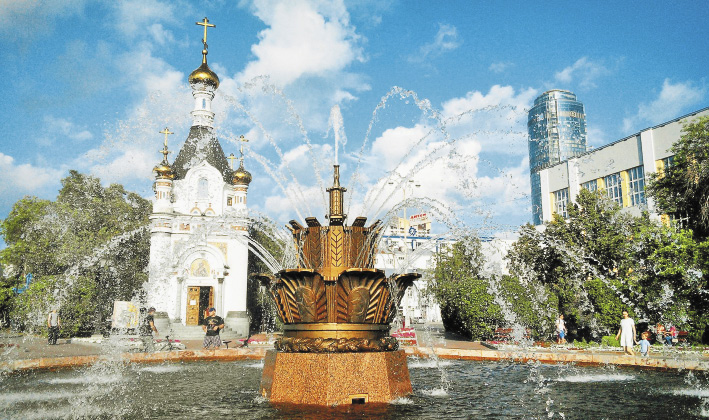
The 24-storey building of the Sverdlovsk Region government, also known as the White House, is also situated on this street. The House of Soviets stood here until 1991, and at the time it was the highest building in the city.
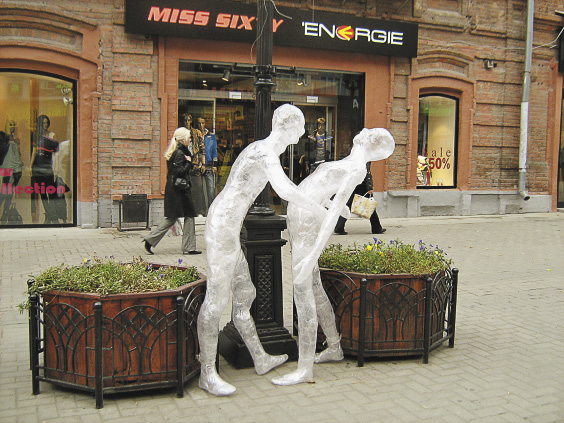
The main tourist attraction on this street is probably the Yeltsin Centre. Tourists and visitors to the city are well advised to take a trip to this modern educational-cultural-museum complex, guarded by a white marble memorial to Boris Yeltsin at the entrance. It is here that red diplomas are handed out to the best graduates of the Ural Federal University (formerly Ural Polytechnic, from which Yeltsin himself graduated).
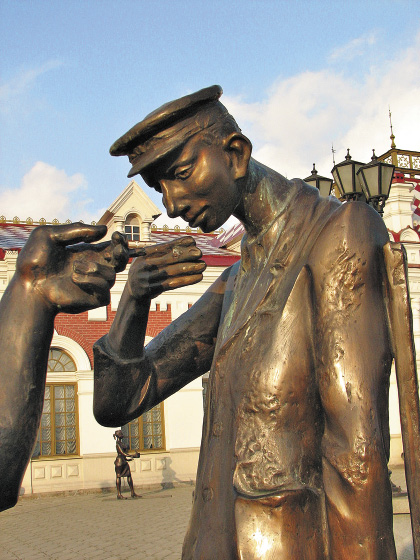
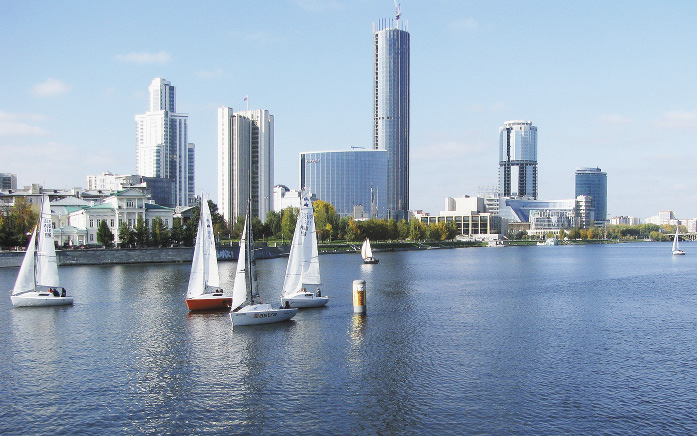
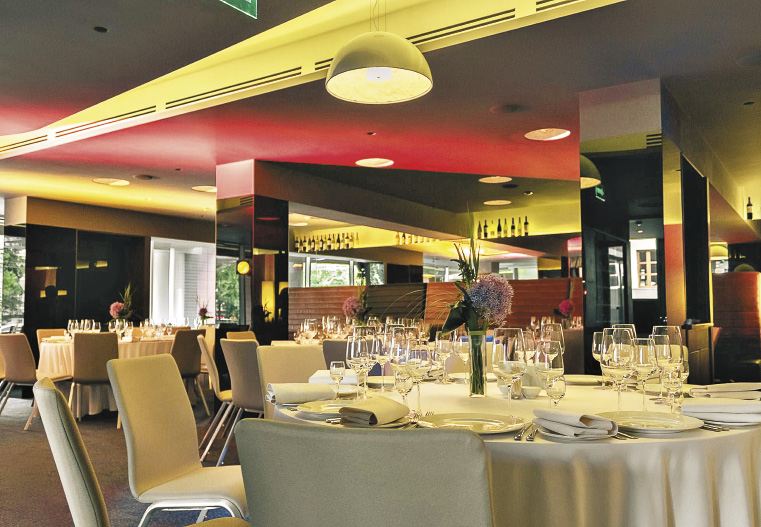
Yeltsin Centre
Of course, the Yeltsin Centre is today one of the most famous and recognisable of Yekaterinburg’s brands. The Yeltsin Foundation should thank its critics for this too, the most ardent of which is the famous film director Nikita Mikhalkov: the Oscar winner has drawn attention to the centre’s work so often that it not only guaranteed the centre’s recognisability, but was a form of advertisement in its own right. “What’s so terrible about it?” viewers wonder, and then go and visit the “ghastly” place worth $185 million.
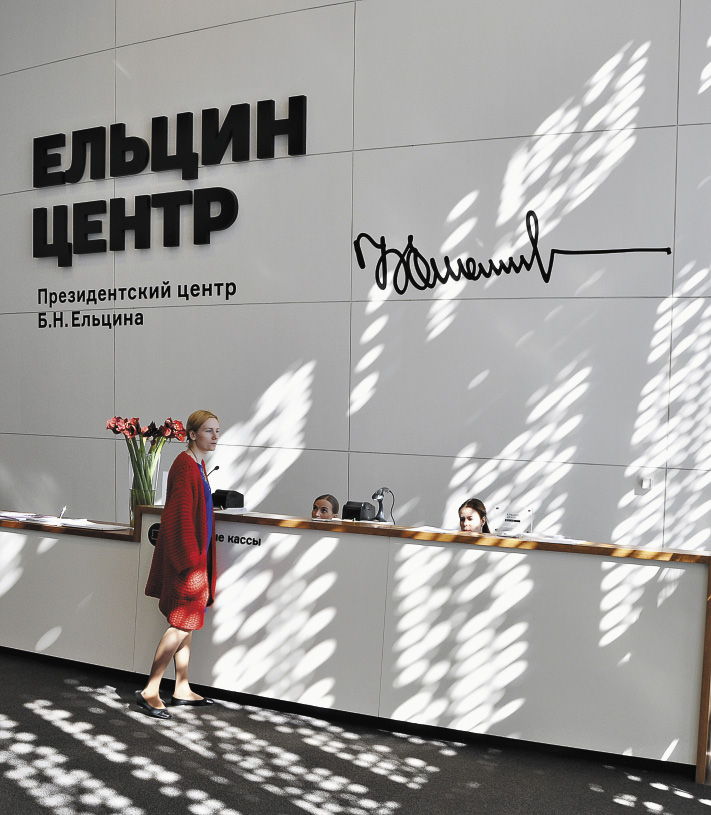
It must be said that the museum itself clings to its defences on all fronts. Tour guides forbade us journalists from taking videos in the bus, which had been converted into a cinema where Naina Yeltsin (Boris Yeltsin’s wife), Tatyana Yumasheva (his daughter) and other famous people were being shown on screen. The heroic image of the first democratically elected president (who, in point of fact, inspires a sense of dissatisfaction in many) is projected from the moment you enter the museum to the moment you leave it. The exhibits are all very interesting, modern, and creative. An American company developed the concept of the centre based on that of US Presidential libraries — if only we had more museums like this.
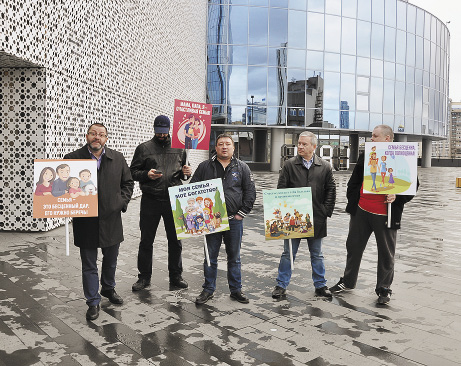
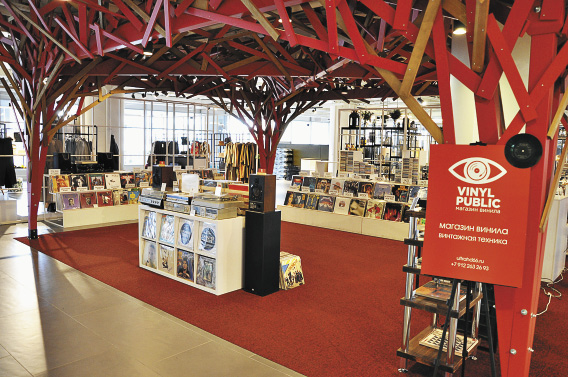

The Yeltsin Centre is a modern facility — aside from the museum itself, cafés, restaurants, stores, gift shops, vinyl stores, fashion brands and offices can be found across its six floors. You can even rent office- or event-space. The centre’s own programme is pretty full, too: there are lectures, conferences, master-classes, cinema showings, and discussion panels every day… along with plenty of scandals. As we were leaving the centre in the evening, a group of men with hastily written signs were standing on the street near the entrance, protesting against a lecture being held about same-sex relationships. A few police officers stood nearby, clearly wondering what to do. Then some fire-fighters drove up, and people started evacuating the building. Apparently someone had called the police claiming to have planted a bomb; the protesters quickly withdrew.
300th Anniversary
Approaching
During my trip, the Yeltsin Centre was hosting the “Bolshoy Ural” international tourist forum, organised by the Centre for Touristic Development of Sverdlovsk Region and attended by guests from other countries and regions of Russia. At the same time the “Tourist Souvenir” competition was running and local craftsmen were showing off their creations: metalware, swords, knives, stone crafts (there they are, the real Ural gems!), and various dolls.
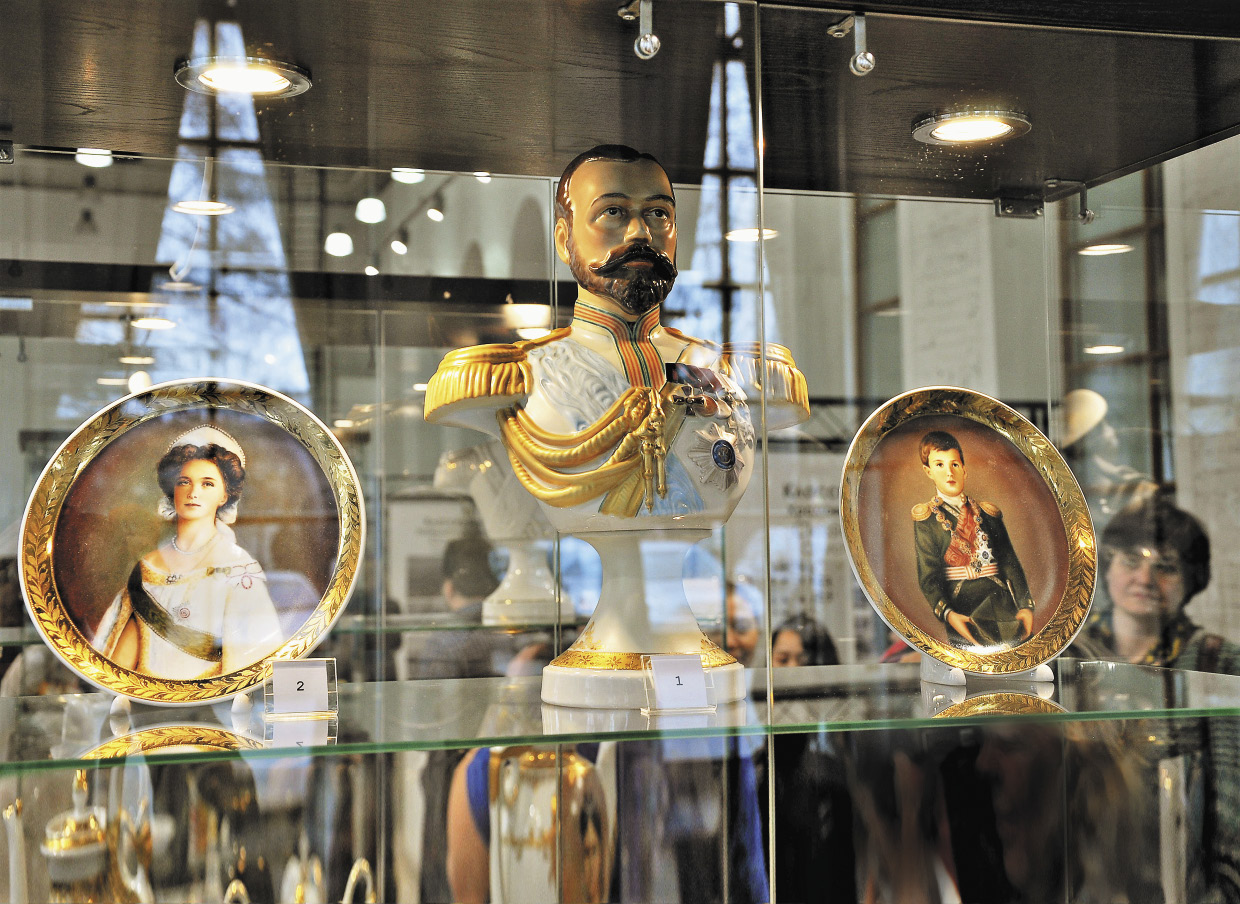
The forum began with the opening of the Sysert porcelain exhibition in the Museum of Architecture and Design of the Ural State University for Architecture and Art. The museum is located in the Historical park, on the so-called “Plotinka” (“Dam”) — one of the city’s main attractions. A dam was built on this part of the Iset river in 1723, in order to serve the needs of the newly-opened Yekaterinburg Metallurgical Plant. The city’s birth is linked to the opening of the factory, and in 2023 Yekaterinburg will celebrate its 300-year anniversary.


In 1723, a dam was built on the Iset river to serve the needs of the Yekaterinburg Mechanical Plant. The city’s birth is linked with the opening of this factory 300 years ago.
Sysert porcelain is a folk-art craft that appeared at the end of the 19th century. Nowadays, not only traditional dishes, teacups, teapots and services are made in the Sysert factory, but also porcelain icons! The tea services are particularly popular, and are decorated with the faces of the last Russian emperor Nicholas II, killed in Yekaterinburg in 1918. With the support of the governor, a new production complex is being planned for the factory, where more than 100 people are employed.
In the Footsteps of the Royal Family
Perhaps every Orthodox believer who comes to the capital of the Urals will visit the Church on the Blood. It was built on a hill on the exact spot where the engineer Nikolai Ipatiev’s house once stood, and in which Nicholas II, his family, and four servants were held under arrest and then shot on the night of July 17th, 1918. In 1977, the Politburo ordered that the house be demolished. Yeltsin, who was at that time the First Secretary of the Sverdlovsk Regional Communist Party Committee, carried out the task. Consecrated in 2003, the church is one of the city’s main tourist attractions.
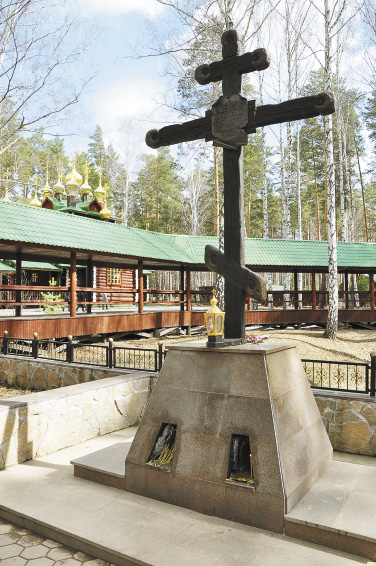
Interestingly, Yekaterinburg used to have a street named after Rimma Yurovskaya, one of the organisers of the Komsomol youth movement in the Urals and the daughter of Yakov Yurovsky, chief executioner of the royal family. On request of the city’s residents, the street was renamed in 1992 to Vladimir Vysotsky Street.
Rimma Yurovskaya Street — named a er the daughter of the Cheka member Yakov Yurovsky, who was the chief executioner of the Tsar and his family — was renamed to Vladimir Vysotsky Street in 1992 by request of the city’s residents.
After visiting the church, I left the city for Ganina Yama (“Ganya’s Pit”), the place where the remains of the murdered royal family were thrown into a mineshaft.
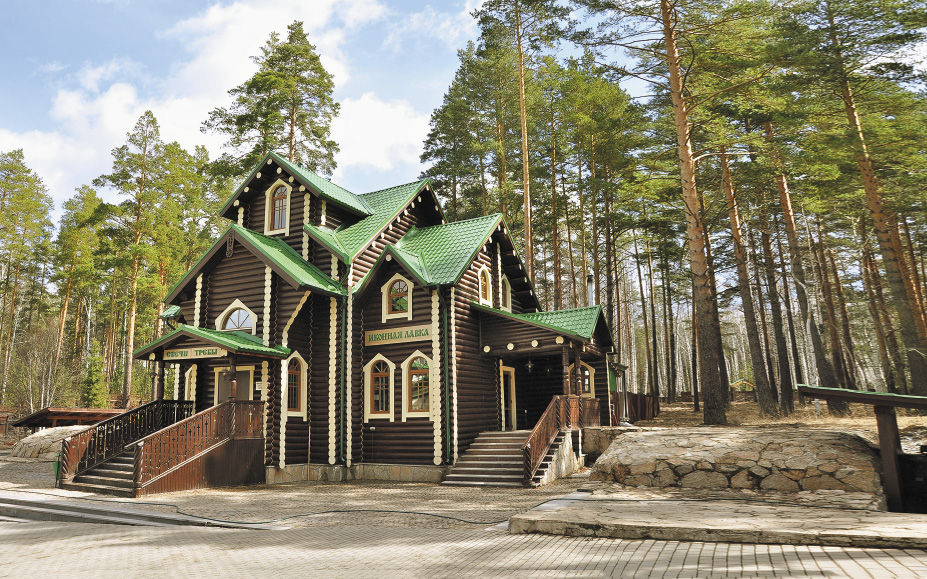
The Orthodox Monastery of the Holy Royal Passion-bearers was built here between 2000 and 2003. The complex consists of seven wooden churches, one for each of the murdered members of the royal family. Three memorials have also been erected on the site: one for Nicholas II, one for Empress Alexandra Feodorovna and one for their children.
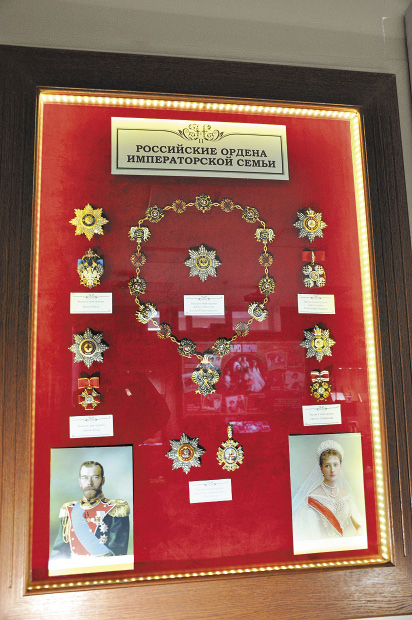
This quiet place in the pine forest is very tranquil and gives guests the chance to learn about the history of the royal family and their demise. A platform surrounds the mineshaft and a cross was erected nearby, and in one of the churches a museum dedicated to the royal family has been opened. Here you can read about the details of the murder, which were compiled by the investigator for high-priority cases, Nikolai Sokolov.
Excursions around the monastery must be booked in advance. Getting out of there is also not a particularly easy task: the internet and mobile connection is bad. But if necessary, you’ll be able to call for a taxi, and from there to the city centre will cost 350 roubles (around $5).
Proper Businessman
Yekaterinburg has a nearby satellite city, Verkhnyaya Pyshma, with a population of more than 70,000 and the headquarters of the global metallurgical giant, the Ural Mining and Metallurgical Company. Its general director and co-owner Andrey Kozitsyn occupies 22nd place in the Forbes 2020 list of Russia’s wealthiest businessmen. He was born and lives in Verkhnyaya Pyshma, and invests the company’s earnings in the city: he has built sports palaces, museums, churches, parks. The population is growing and housing is being built; people want to come here for good work and pay.
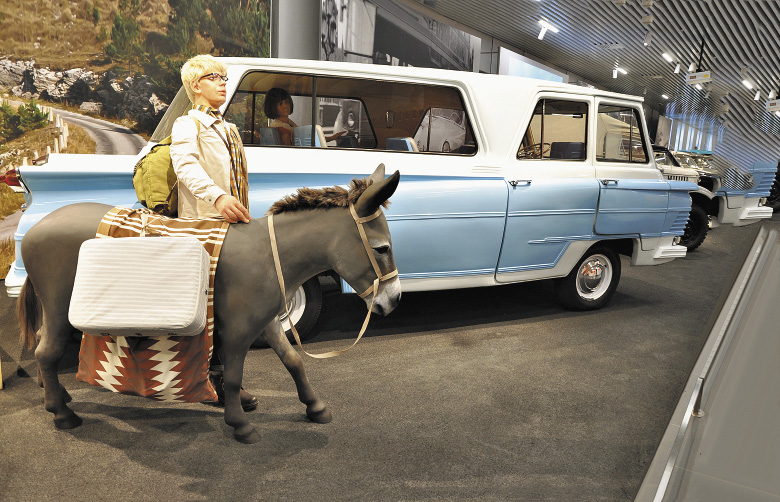
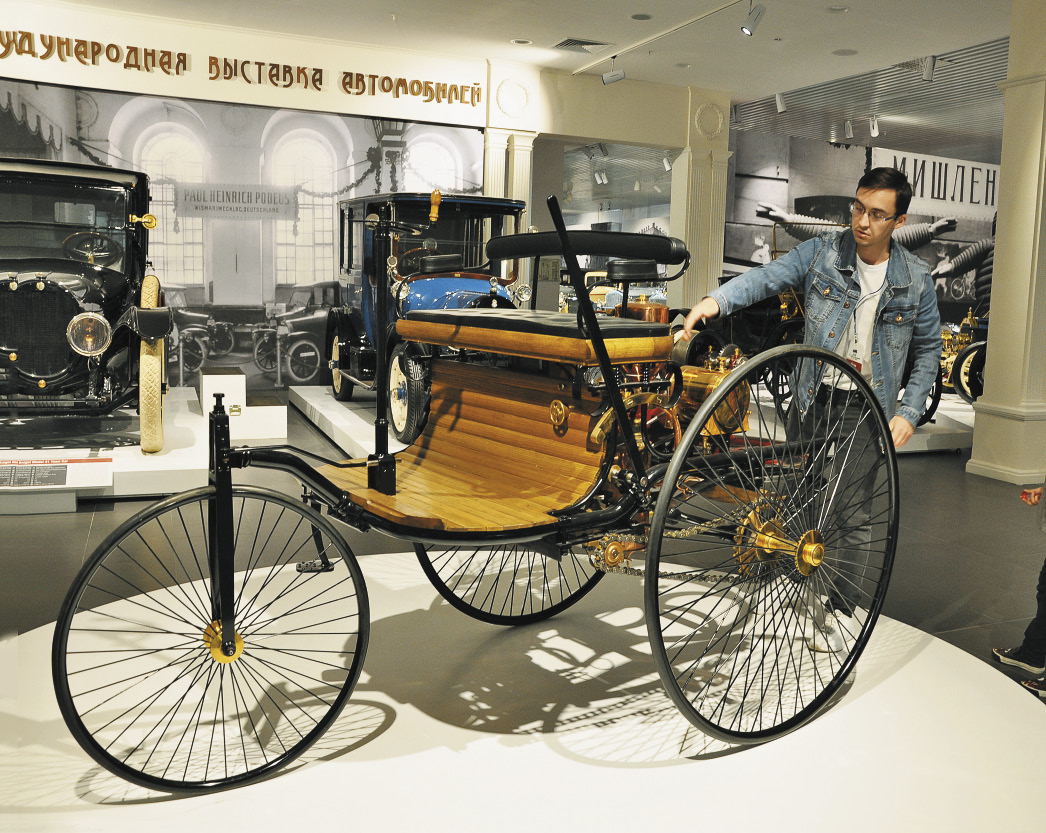 In the Automotive Technology Museum 20th Century AUTO, there is a collection
In the Automotive Technology Museum 20th Century AUTO, there is a collection
of cars and motor vehicles spanning 130 years of history, including a minibus
from the film “Kidnapping, Caucasian Style”.
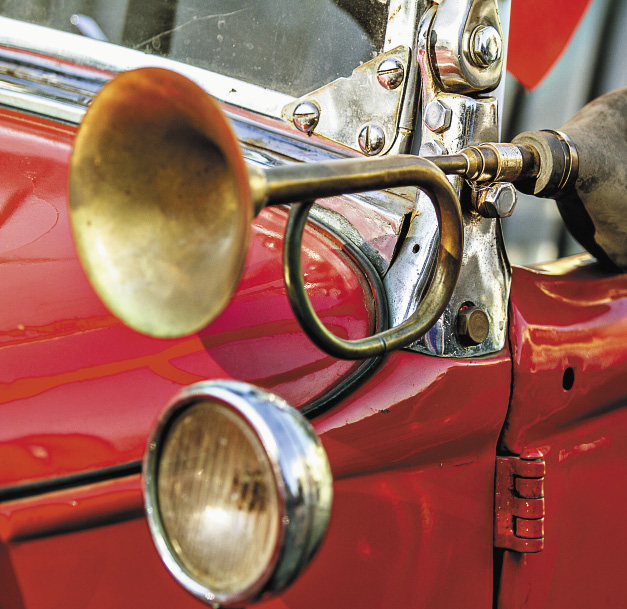
One of Andrey Kozitsyn’s favourite places is the Museum Complex of Military and Civilian Technologies, which we visited with some fellow journalists. In 10 years, the museum has collected more than 500 pieces of military equipment, while the Museum of Automotive Technology, 20th Century AUTO, houses the biggest collection of retro vehicles, motorcycles, and bicycles in Russia. Vehicles spanning more than 130 years are displayed in the new 4-storey building, and the first floor is filled with vintage foreign-made cars — all of which were sold by their owners at auctions. All the cars are in working order and perfect condition, so much so that it’s hard to peel yourself away! In total, the museum’s collection includes more than 160 cars and almost as many motorcycles and bicycles.
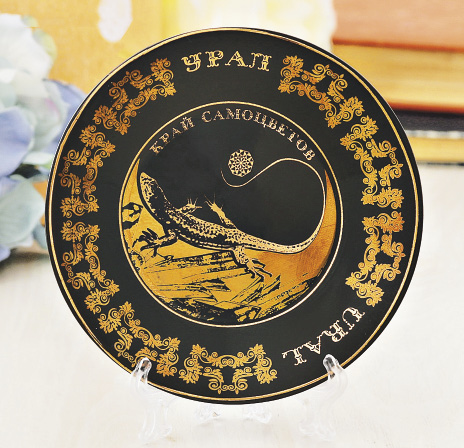
Instead of an Epilogue
Before trekking to another cult spot in Yekaterinburg, the Kolyada Theatre, I stopped for a snack in a café opposite my dear old School No. 9. There were lots of young people there, obviously students, but the civilised, measured speech of two boys with rucksacks at the neighbouring table stood out. Hearing the word porebrik, I almost choked on my coffee — that’s a distinctly St Petersburg word for “kerb”. I’m not in St Petersburg, am I? Russia’s cultural capital? Yekaterinburg was breaking up in front of me, with this new, unexplored side of it… And for the rest of my time in the city I was convinced: people in this city are ordinary, cultured, polite. They’ve started to monetise the common expression “you’re, what, from the Urals?” and now it appears on socks and cards sold in the souvenir shops. So, I bought some as a keepsake. TLR
GETTING THERE
HOW TO GET THERE
TICKETS FROM MOSCOW TO YEKATERINBURG WILL SET YOU BACK BETWEEN $44 AND $52, WITH A FLIGHT TIME OF 2 HOURS 20 MINUTES. A TRAIN TICKET WILL COST AROUND THE SAME, AND THE JOURNEY TIME IS MORE THAN 24 HOURS.
WHERE TO STAY
THE HUGE RANGE OF HOTELS CATERING TO ALL TASTES AND BUDGETS IS ONE OF THE CITY’S ADVANTAGES FOR TOURISTS. A ROOM FOR TWO IN THE 4-STAR PARK INN COSTS AROUND $53, IN THE FOUR ELEMENTS FROM $40, AND IN THE HOTEL ONEGIN FROM $36.
WHERE TO EAT
THE CITY HAS A HUGE NUMBER OF CAFÉS AND RESTAURANTS; ON 8TH OF MARCH STREET ALONE THERE ARE MORE THAN 70! TRY THE OXTAIL SOUP IN GASTROLI PUB, BLINI WITH CAVIAR IN DUBROVIN, DELICIOUS CAKES AND DESSERTS IN THE “NYE TORTY, A TORTY” CAFÉ.
WHAT TO BUY
CROCKERY AND OTHER WORKS OF SYSERT PORCELAIN, VARIOUS PIECES CRAFTED FROM URAL STONE, CREATIVE SOUVENIRS FROM THE SHOPS IN THE YELTSIN CENTRE.
Text: ANTON SEMYONOV
PHOTO: J2GIS.RU / USTPICK.RU / MONKRESTAURANT.RU / RADUGAKAMNYA.RU / TOP50.66.RU / WIKIMEDIA.ORG / ANTON SEMENOV / ALEXANDER YAMPOLSKY / RIA NOVOSTI

